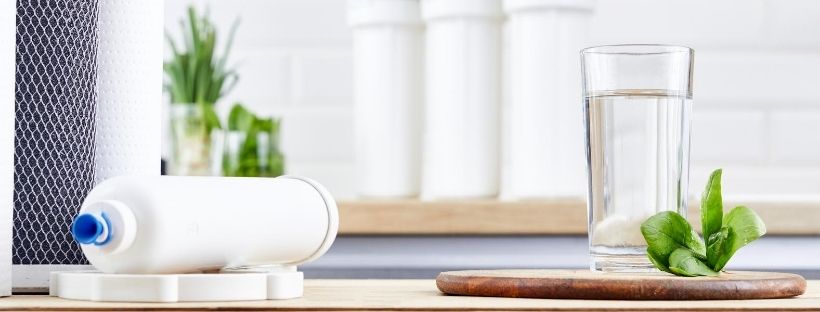
23 Jul. 20
How Does a Reverse Osmosis Filter Work?
Reverse Osmosis or RO is a commonly used water filtration system. It is a simple, straightforward, and effective way to remove most harmful contaminants, making the water safer to drink. Many experts recommend it for residential water filtration. At Simple Water Softeners, we’re happy to explain how this system works. Here’s a look at what you need to know about Reverse Osmosis.
What is Reverse Osmosis?
Reverse Osmosis is bottle quality water. Same process the large water companies use just shrunk up and put under your kitchen sink. Reverse Osmosis is a straightforward filtration system that pushes unfiltered or feed water through a semipermeable membrane, separating the permeate water from wastewater or brine. The filter allows most of the water molecules through while blocking all contaminants in it. The water passes through the more concentrated part of a membrane, where all pollutants are removed, and it floods the less concentrated part. This process can filter out contaminants like:
- Salt
- Fluoride
- Sediment
- Arsenic
- Chlorine
- VOCs
- Pesticides
- Herbicides
- And more
RO systems aren’t very effective against viruses and bacteria, but water supplied by public plants is thoroughly decontaminated, so there’s no need to worry about it.
How Does RO Filtration Work?
RO systems send feedwater through several pre and post-filters to remove as many contaminants as possible. Simple’s Reverse osmosis has 6 stages Here’s a look at how this works:
- Pre-Filters. Water is first pushed through a series of pre-filters to remove most of the sediment and other such solids. This stage effectively removes any solid that hasn’t dissolved in water. Pre-filters are also known as sediment filters, and most RO systems have at least one present.
- Carbon Filters. RO system has 2 pre-filter carbon filters a that helps remove volatile organic compounds or VOCs from the water. It removes chlorine and similar contaminants while improving the overall taste of water as well.
- RO Membrane. Once the water passes pre-filter, it is pressured through an RO membrane, where approximately 97.5% of the dissolved compounds are removed. The RO membrane handles the bulk of the filtration, making sure the water has reached bottle quality standards.
- Storage Tank. All of the purified water is directed to a storage tank after going through an RO membrane. The system will continue to purify water until the tank is full before stopping automatically.
- Post-Filter. The stored water passes through a post-filter before reaching the dedicated faucet. There is two stages in this filter. This final filtration ensures there are no harmful contaminants in the water, and is of the highest quality.
RO systems are highly effective and great for both residential and commercial settings. If you are concerned about contaminants, harmful substances, and want to improve the overall quality of drinking water, this system is a good choice. You can use it under the sink and there is a possibility your refrigerator can also be connected.RO is most suitable for producing drinking water.
If you want to know more about reverse osmosis or have questions, don’t hesitate to contact us at Simple Water Softeners. You can call (210) 960-2555 or use this contact us form.


